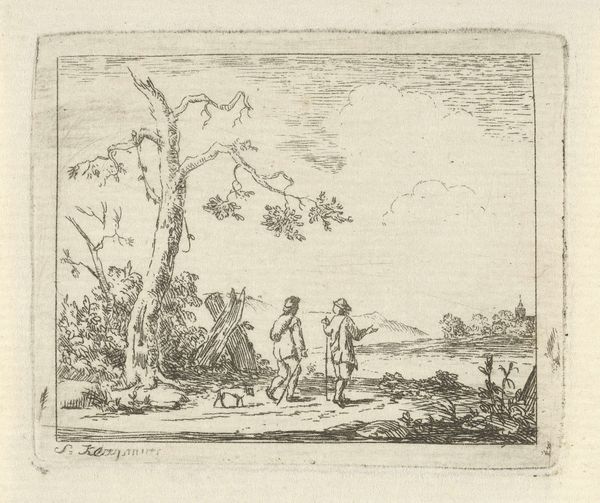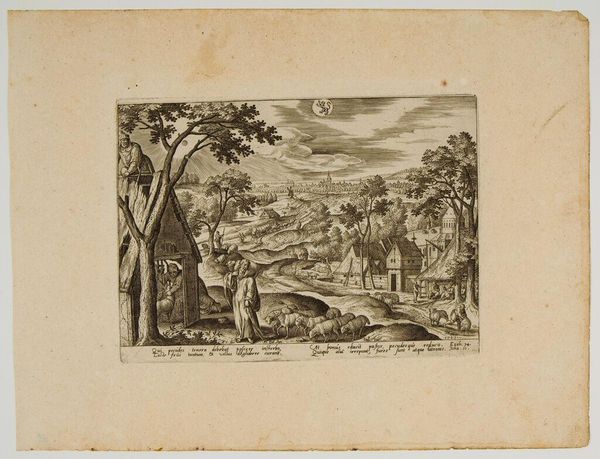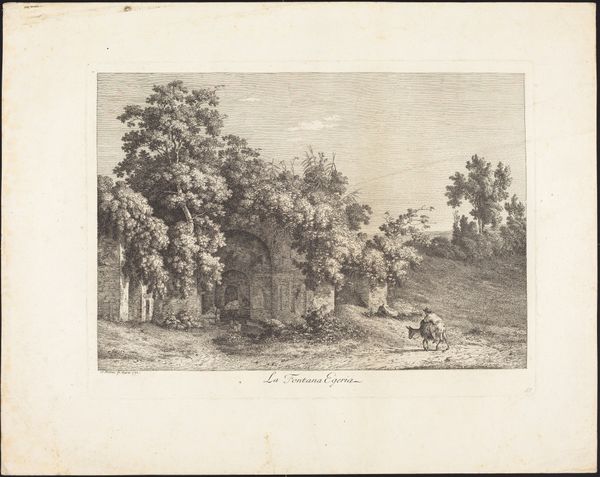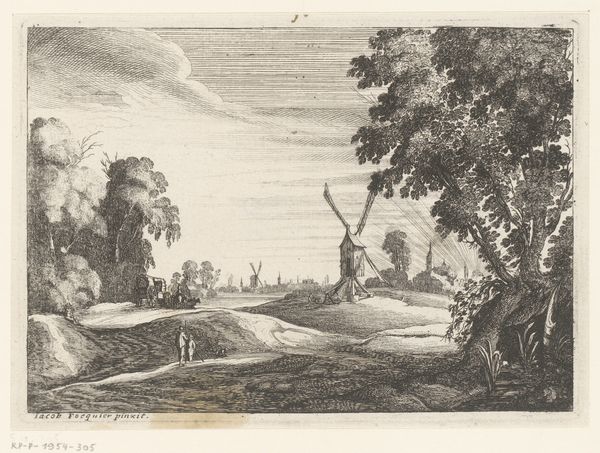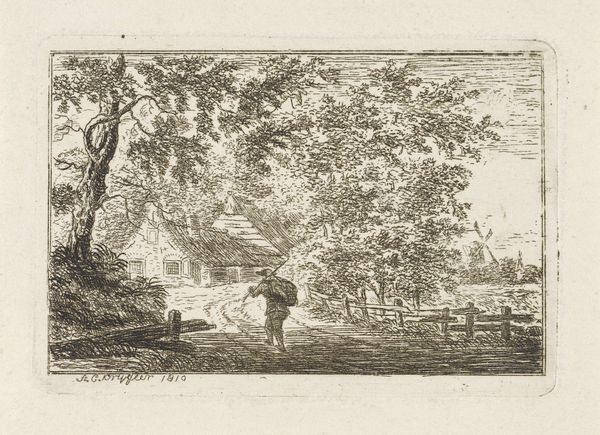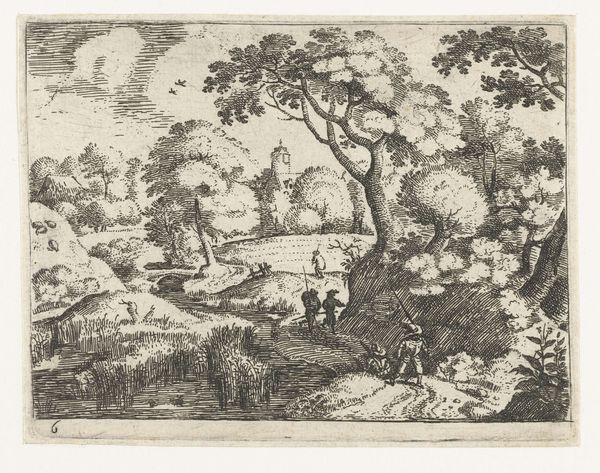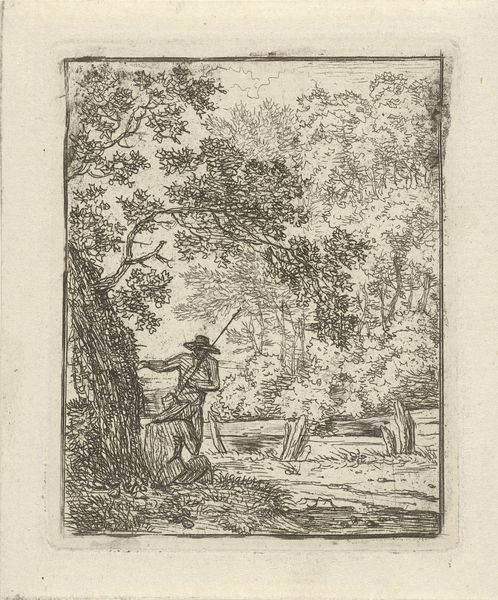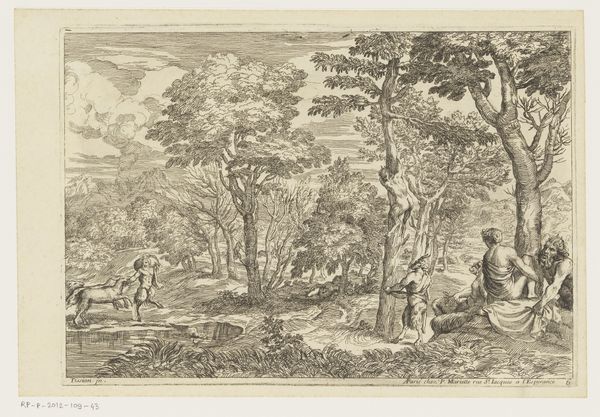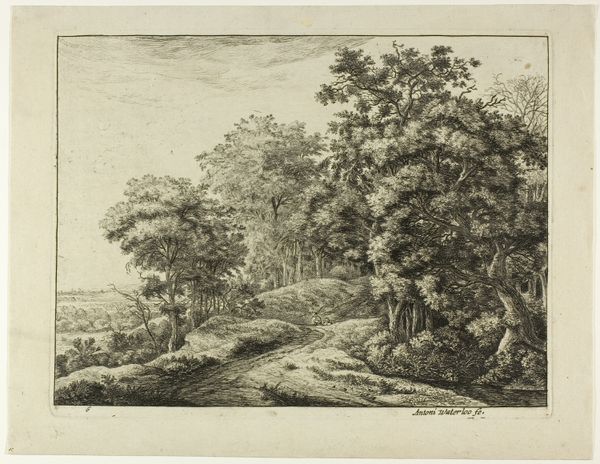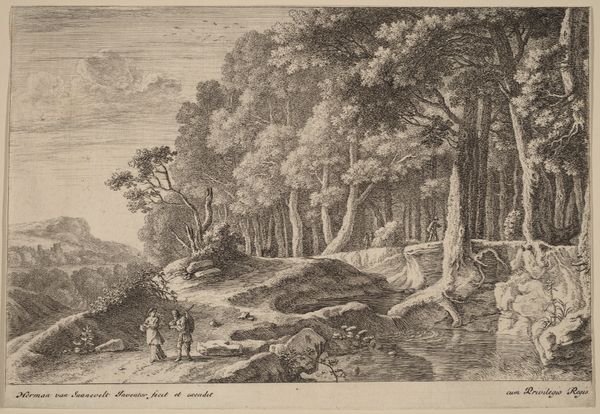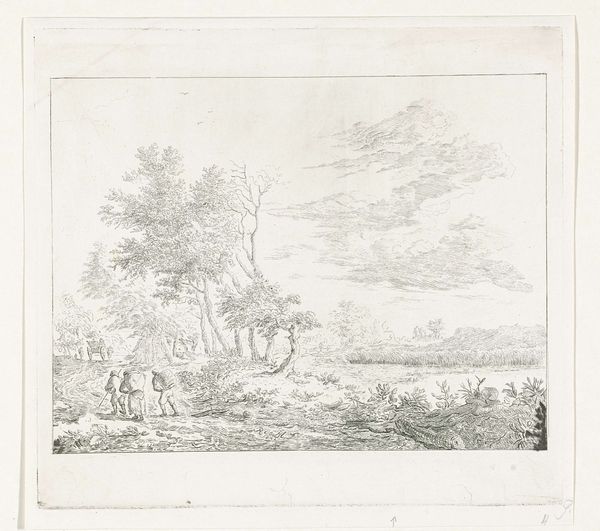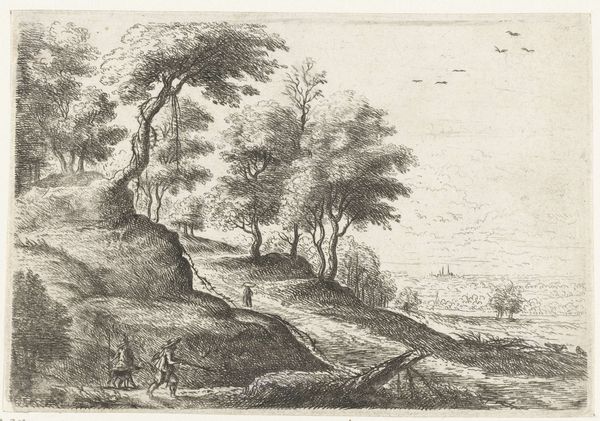
print, engraving
# print
#
landscape
#
mannerism
#
figuration
#
line
#
history-painting
#
engraving
Dimensions: height 132 mm, width 161 mm
Copyright: Rijks Museum: Open Domain
Pieter Bast created this print, *Elia door de raven gevoed*, using etching, a demanding intaglio process. Here, acid eats into the metal plate to produce fine lines, capturing a detailed scene of Elijah being fed by ravens. Look closely, and you will see the effects of the etching process on the artwork's appearance. The acid creates a slightly raised surface on the print, lending it a tactile quality. The weight of the lines defines forms and textures, like the tree under which Elijah rests. The monochromatic palette emphasizes line work and tonal variations achieved through varying the density of etched lines. Bast worked during the rise of printmaking, a period when images could be reproduced and disseminated widely. Etching, while requiring skill and precision, allowed for a degree of automation, reflecting the changing landscape of artistic production in the early modern era. The labor-intensive etching process also ensured the print's value as a commodity in a growing art market. So, as you consider this print, remember the intricate dance of materials, processes, and economic forces that shaped its creation. It’s a testament to the complex relationship between craft and commerce, and the enduring power of the printed image.
Comments
No comments
Be the first to comment and join the conversation on the ultimate creative platform.


